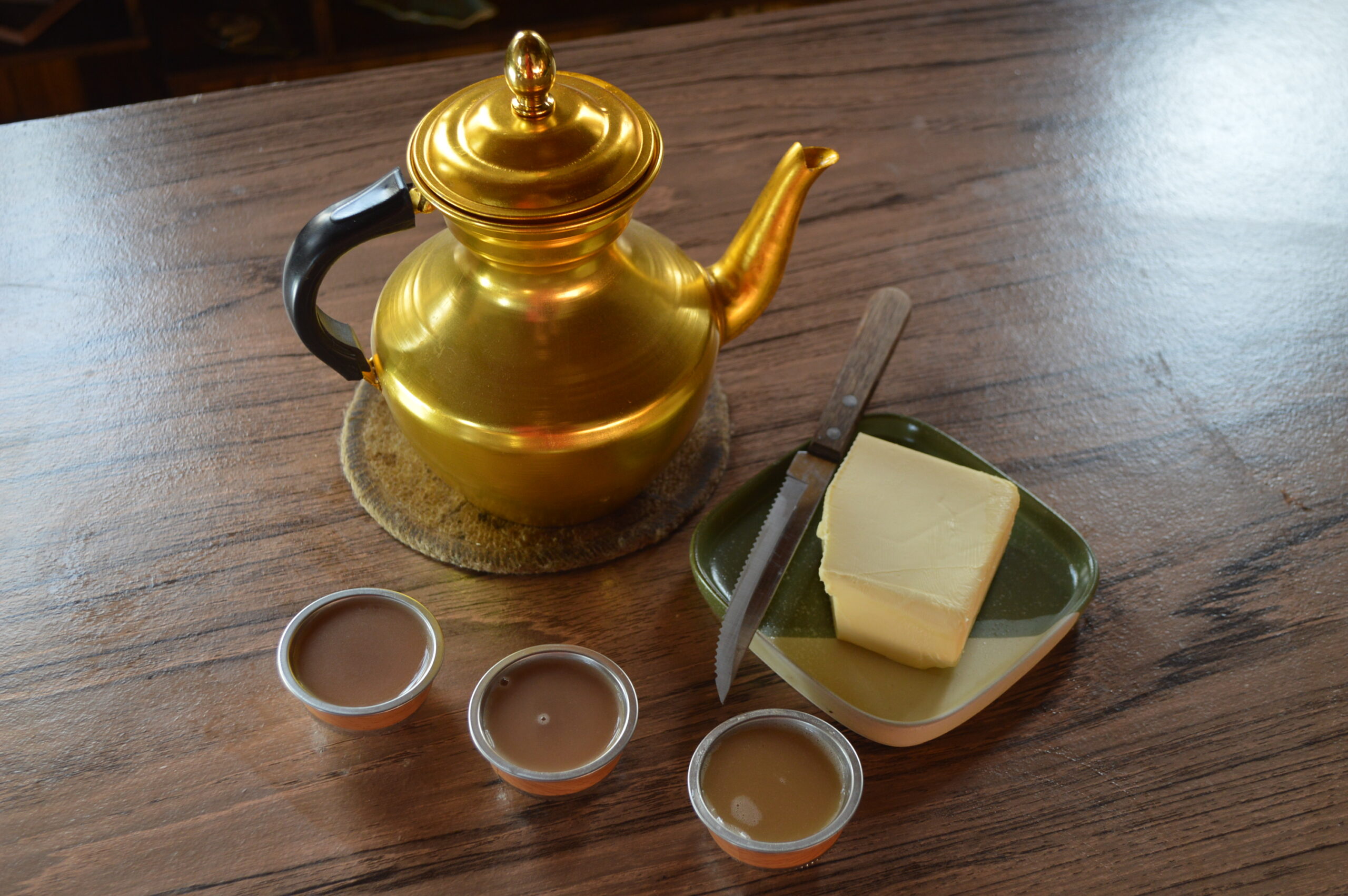Description
Matching Sichuan tea and Tibetan Tea
To book our online workshops, just contact us in advance to book the time.
Since 153 BC, the taoist Wu Lizhen discovered the medicinal function of wild tea to cure diseases and save people in Meng (Mengding) Mountain, Sichuan province, and as the earliest tea grower in China and even in the world, he cultivated seven tea trees from seeds. Mengding tea has been a tribute from the Tang Dynasty to the Ming and Qing Dynasties. From ancient times to the present, good tea has been produced in Mengding Mountain. The famous green tea with the longest history, Mengding Sweet Dew, yellow tea Mengding Yellow Bud, as well as the later evolved black tea Chuan Hong and dark tea border selling tea.
One of the two main routes of the ancient tea horse road starts from Ya’an, Sichuan. The border selling tea produced in Mengshan is transported to Lhasa, Tibet or other countries further away, by caravan as the main means of transportation, for tea horse exchange and other transactions. In the 1960s, small and medium leaf tea trees in Mengding Mountain, Sichuan were introduced to Nyingchi on the Tibetan Plateau, forming the current snow plateau ecological tea garden, producing green tea, black tea and dark tea. Tibetans on the Qinghai Tibet Plateau make different milk tea butter tea etc. with border selling tea. Add butter tea, milk residue and sugar to the fried highland barley flour and stir them evenly, to make Zanba, a traditional Tibetan snack, which is rich in nutrition and high in calories, is very suitable for hunger and cold protection.
The ancients picked ancient tea trees in Mount E‘mei and boiled them in springs, which can be traced back to the Spring and Autumn period and the Warring States period. In the Han Dynasty, Taoists and monks in temples and Taoist temples all picked new tea and baked it in time, it was called “E’mei snow tea”. In the Ming Dynasty, E’mei tea gardens were successively granted by the emperors. Up to now, E’mei mountain is still a famous tea producing area, such as green tea Bamboo Leaf Green, jasmine tea Snow Floating in Green Pound, etc.
Sichuan has outstanding people and celebrities from all dynasties. They have left many excellent tea poems and songs in Sichuan. The cultural relics of tea sets and tea events unearthed in Sichuan gave birth to the glorious tea history and culture of Bashu (two ancient states in modern Sichuan), and literati culture constitutes the main line of Sichuan tea culture.
Sichuan people especially like drinking tea and staying in teahouses all day. As the saying goes, the number of teahouses in the world is China, the number of teahouses in China is Sichuan, and Chengdu teahouse is known as “teahouse is the best in the world”. Teahouses all over the streets and alleys have become a major landscape in Chengdu.
Contact us for an appointment:
Email: info@liu-tea-art.com
Tel.: 0049/51819010891
Address: Immserstr. 22 Alfeld (Leine) 31061 Germany








































